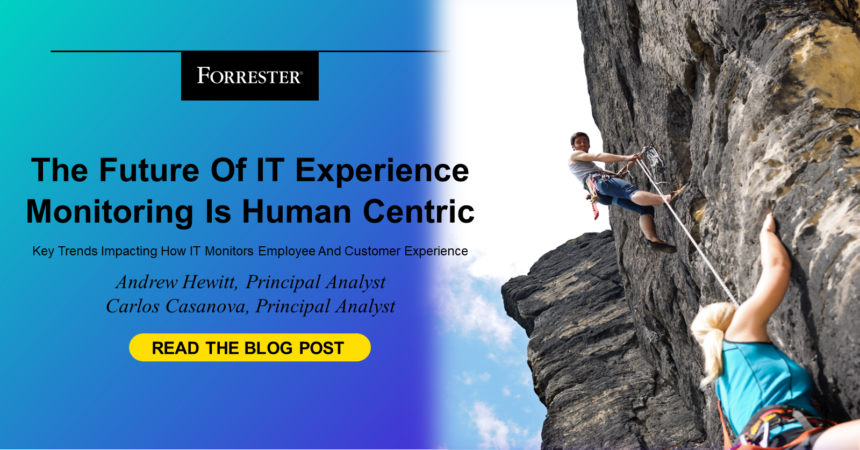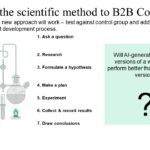“We have a gazillion products to monitor technology, but none of them measure the holistic experience.”
—quote from a recent Forrester client interaction
Let’s Face It: IT Is Obsessed With Monitoring
Whether they’re back-end servers, customer-facing websites, enterprise applications, or, most recently, the end-user computing experience, there are clearly no shortage of tools available today for enterprises to monitor the experiences of their infrastructure, employees, and customers.
Yet despite the rampant investment in these tools, we frequently hear statements such as the quote above from frustrated technology leaders who need a more holistic view into experience, one that considers the multitude of technologies, processes, and journeys that the user struggles through to accomplish a basic task. IT is increasingly realizing that the current fractured approach to experience monitoring is no longer working. That’s because it’s:
- Blind to the user journey. As employees or customers navigate across a company’s systems, they will inevitably interact with multiple technologies. The problem is that all these technologies impact the user holistically. For example, a poor device experience is likely to influence a user’s perception of application performance, even though the two technologies have separate monitoring approaches.
- Expensive. Each discrete monitoring category comes with its own dedicated licensing, which means IT must build a business case and justify the ROI for multiple experience tools, a task that’s a distraction from the larger problem: understanding the entirety of the user experience.
- Difficult to manage. The more tools that IT has, the more experts that it needs to support and run them. Most experience monitoring tools require a dedicated person to deploy the tool, identify use cases, and monitor the results. To make matters worse, each of these people may have different approaches to doing this.
Clearly, We Have A Problem, But What’s The Solution?
Forrester has just published what we believe to be the answer to the conundrum of fractured experience monitoring.
The answer is human-centric experience monitoring.
What Is Human-Centric Experience Monitoring?
Ultimately, a human-centric approach to experience monitoring shifts the focus away from discrete technologies and on to the individual’s journey to accomplish tasks. For an employee, this might mean navigating an enterprise application to look up customer information. For a customer, that might mean trying to make a purchase on a company’s website. The focus on human centricity understands that there are multiple factors that impact that user’s experience, such as discrete technologies, prior interactions with the company, expectations around the experience, and more. Think about your latest travel experience from booking airline tickets, adjusting to schedule changes, flight delays, lost baggage, missing connections, etc. … these individual events, from the start of the trip, booking and through to the end, returning home — collectively, not discretely — form the travelers’ experience with the airline.
In our report, The Future Of IT Experience Monitoring Is Human Centric, we lay out six key areas that differentiate the old way (i.e., the fractured approach) from the new way (i.e., human centric). They are:
- Holistic telemetry. Human-centric experience monitoring considers multiple types of data from multiple technologies to understand the user, including sentiment.
- Open standards. While the industry does not have standard definitions of experience, Forrester believes that we are moving in that direction, especially if independent software vendors increasingly open up data about their applications to monitoring tools.
- Personalization. Personas don’t cut it anymore — personalization is the future. Human-centric experience monitoring will keep the unique individual’s preferences, expectations, and past interactions in mind.
- Predictive remediation. From reactive to proactive to predictive, human-centric experience monitoring will take the personalized inputs from employees and customers and begin to predict what types of actions and events will most impact their experience going forward.
- Natural language. Generative AI is bringing natural language processing to every experience monitoring tool. Expect fewer GUIs and more natural-language search bars.
- Design focus. Ultimately, the problem with monitoring tools is that they eventually come to identify challenges that they simply can’t fix. Application navigation is slow? Maybe the user interface needs a revamp. Ultimately, the future of experience monitoring will push admins away from simple monitoring and turn them into designers.
What do you think? Does this future resonate with your challenges? We’d love to hear from you! Check out other research from Andrew Hewitt and Carlos Casanova. Forrester clients can reach out by email to inquiry@forrester.com to schedule a formal inquiry to discuss the report further.








